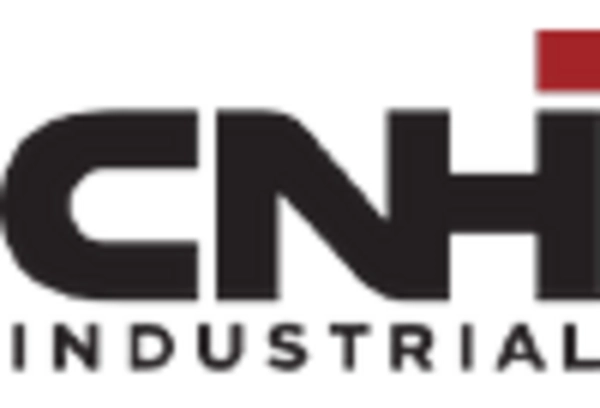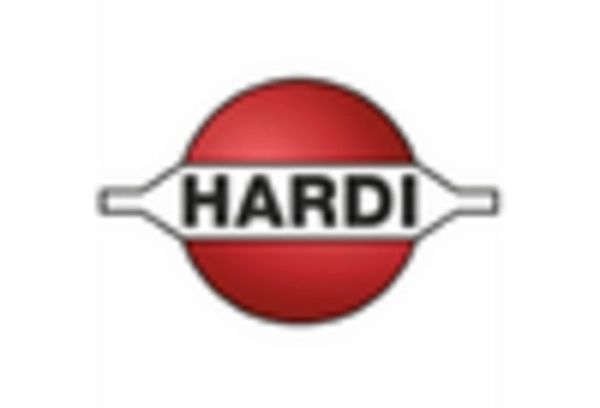Rising Demand for Food Production
The increasing global population necessitates a substantial rise in food production, thereby driving the Fertilizer Applicator Market. As agricultural practices evolve, farmers are compelled to enhance crop yields to meet the growing demand. According to recent data, food production must increase by approximately 70% by 2050 to sustain the burgeoning population. This scenario compels farmers to adopt advanced fertilizer application techniques, which are integral to maximizing productivity. Fertilizer applicators play a crucial role in ensuring that nutrients are delivered efficiently and effectively, thus supporting sustainable agricultural practices. The Fertilizer Applicator Market is likely to witness significant growth as farmers seek innovative solutions to optimize their operations and meet the escalating food requirements.
Shift Towards Organic Farming Practices
The shift towards organic farming practices is reshaping the Fertilizer Applicator Market. As consumers increasingly demand organic produce, farmers are adapting their practices to meet this preference. Organic farming often requires specialized fertilizer applicators that can handle organic fertilizers and amendments effectively. This transition is supported by various initiatives aimed at promoting sustainable agriculture, which further drives the need for innovative applicator solutions. Market data suggests that the organic food market is projected to grow at a compound annual growth rate of over 10% in the coming years. Consequently, the Fertilizer Applicator Market is likely to benefit from this trend as manufacturers develop applicators tailored to the unique requirements of organic farming.
Technological Advancements in Agriculture
Technological innovations are transforming the agricultural landscape, significantly impacting the Fertilizer Applicator Market. The integration of precision agriculture technologies, such as GPS and IoT, allows for more accurate and efficient fertilizer application. These advancements enable farmers to apply fertilizers at optimal rates and timings, reducing waste and enhancing crop health. The market for precision agriculture is projected to grow substantially, with estimates suggesting a compound annual growth rate of over 12% in the coming years. As farmers increasingly adopt these technologies, the demand for sophisticated fertilizer applicators that can integrate with these systems is expected to rise. Consequently, the Fertilizer Applicator Market is poised for expansion as it aligns with the broader trend of technological adoption in agriculture.
Increasing Investment in Agricultural Infrastructure
Investment in agricultural infrastructure is a critical driver for the Fertilizer Applicator Market. Governments and private entities are recognizing the importance of modernizing agricultural practices to enhance food security and economic stability. This investment often includes funding for advanced machinery, including fertilizer applicators, which are essential for efficient farming operations. Recent reports indicate that agricultural investment is expected to reach unprecedented levels, with billions allocated to improve productivity and sustainability. As infrastructure improves, the demand for high-quality fertilizer applicators is likely to rise, further propelling the growth of the Fertilizer Applicator Market. This trend underscores the interconnectedness of agricultural development and the need for effective fertilizer application solutions.
Environmental Regulations and Sustainability Initiatives
The Fertilizer Applicator Market is significantly influenced by the growing emphasis on environmental sustainability and regulatory frameworks. Governments and organizations are increasingly implementing stringent regulations to minimize the environmental impact of agricultural practices. This trend encourages the adoption of more efficient fertilizer application methods that reduce runoff and enhance nutrient management. For instance, the implementation of best management practices (BMPs) is becoming commonplace, promoting the use of precision applicators that optimize fertilizer use. As a result, the Fertilizer Applicator Market is likely to experience growth as manufacturers develop products that comply with these regulations while also meeting the sustainability goals of farmers and consumers alike.


















Leave a Comment